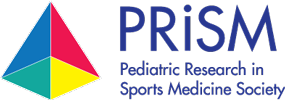Instructional Course 1: Motion Capture Technology for RTP Decision-Making: What's the hold up?
Course Summary
Three-dimensional analysis of human movement utilizing motion capture technology allows for an accurate and objective depiction of kinematics and kinetics the motion of individual body segments, how these segments move in relation to each other, and the way in which forces act upon body segments and joints. Thus, 3D motion capture is an increasingly popular tool for a wide variety of clinical assessments, including diagnostic testing, clinical decision-making, outcome prediction, and treatment management. However, clinical services using motion capture have primarily focused on gait analysis in pediatric patient populations diagnosed with motor disorders. These services rarely exist in a sports medicine clinical setting.
In the sports medicine domain, 3D motion capture has primarily been utilized to optimize athletic performance, develop screening strategies for injury prevention, and identify injury mechanisms that commonly occur during sports and activity. In recent literature, kinematic and kinetic data have been reported to better understand human movement during specific dynamic activities or following sport-specific treatments. For example, biomechanical analyses have informed providers on outcomes following anterior cruciate ligament (ACL) reconstruction and the potential risk for re-injury. Specifically, research in this area has demonstrated that kinematic and kinetic asymmetries are often present following ACL treatment despite acceptable return-to-play (RTP) scores. While recent literature in sports biomechanics has been essential for the treatment of youth athletes, the potential of motion capture is still not maximized in the clinical setting. Numerous barriers to the utilization of more advanced motion analysis technology have been previously reported, including but not limited to the cost of equipment, laboratory space requirements, collection and processing time, difficulty of data interpretation, and the cost of qualified personnel to perform the testing. However, summaries of physician feedback on the utilization of this technology for gait analysis has concluded that the use of motion capture can result in savings of resources given more favorable surgical outcomes, and further, that more advanced movement analysis data may increase a surgeon™s level of confidence in a treatment plan.
Therefore, the purpose of this course is to review current RTP evaluations, present how motion capture may be implemented for RTP decision-making, and share the PRiSM sports medicine providers knowledge, attitudes, and perceptions about the clinical usefulness of 3D motion capture assessed through a survey and focus groups.
Course Objectives
- Review currently recognized best practices for RTP decision-making and recent evidence of potential pitfalls with commonly used functional tests and/or RTP metrics. Discuss evidence supporting the implementation of more technologically advanced RTP evaluation.
- Provide an in-depth presentation of how motion capture may be used for clinical decision-making.
- Present the knowledge, attitudes, and perceptions of PRiSM membership on the clinical usefulness of motion capture. Discuss potential solutions and needed future research that may mitigate expressed concerns with the clinical use of motion capture.
Presenters
| Sophia Ulman, PhD |
| Chris Kuenze, PhD, ATC |
| Mia Katzel, PT, DPT |
| Corinna Franklin, MD |
| Justin DiSanti, PhD |


